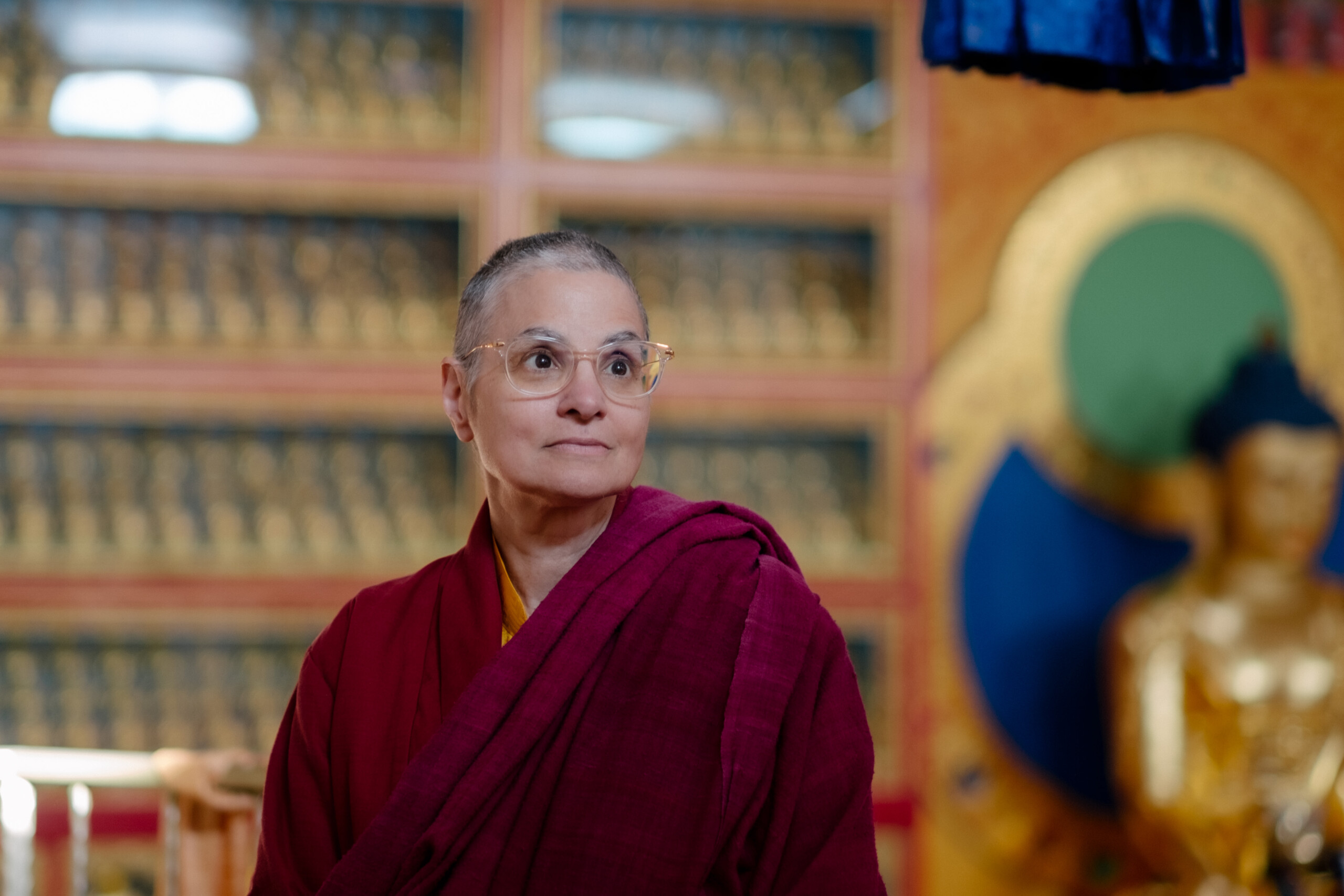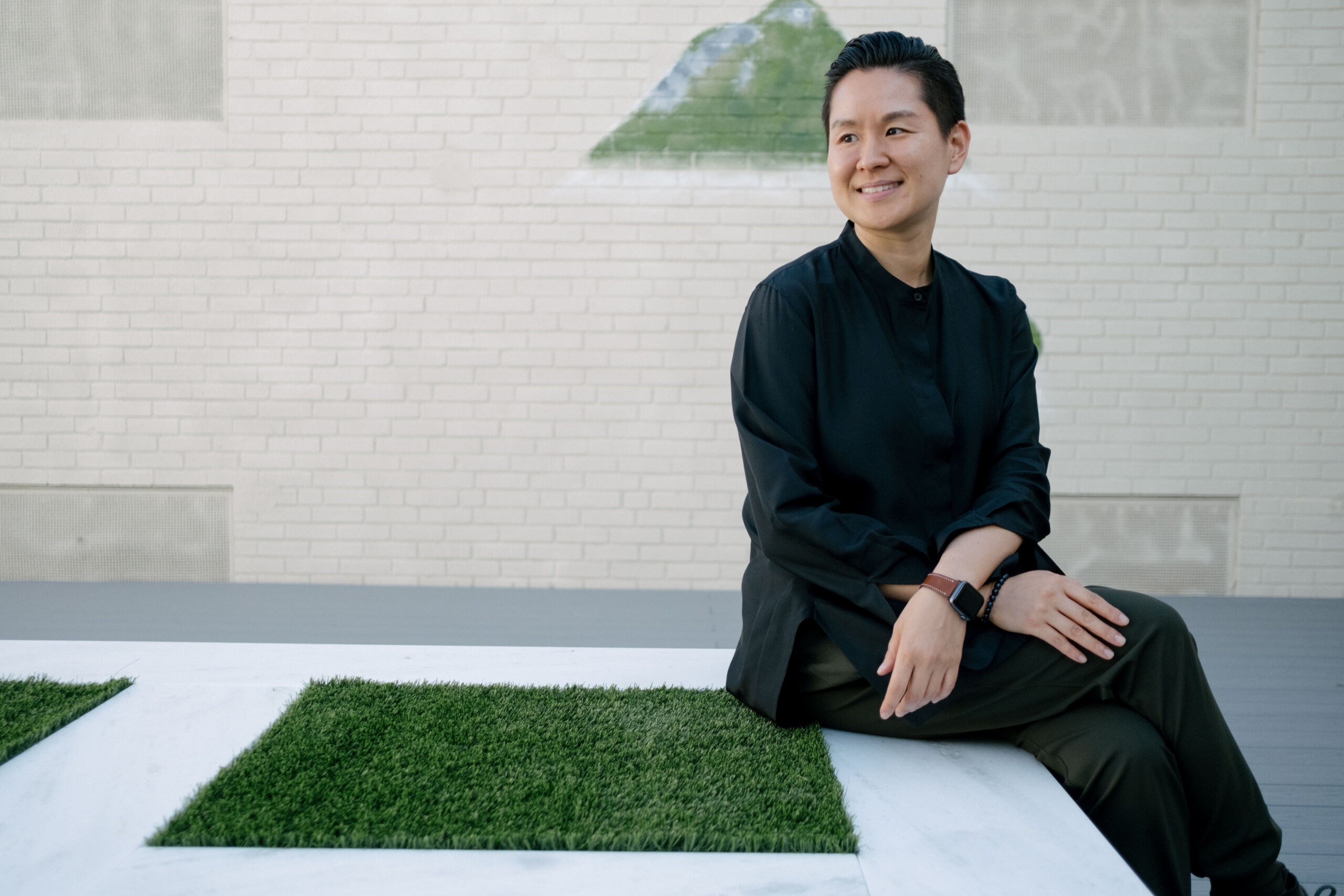Shinchok
As she reached the limits of her knowledge in Hinduism, Shinchok turned her attention to the Mahāmudrā, discovering that Buddhist teachings provided the answers she sought. Her desire for a genuine meditation master led her to a Buddhist center where she encountered the teachings of Je Tsongkhapa. Feeling a profound connection, she embraced Buddhism and its emphasis on devotion, recognizing it as a path to crack open her heart and discover her true self.
Ani Lodro
And then at a certain point in around 30 years old, you know, I just was extremely unhappy and it seemed like I shouldn't be because I had, you know, done all the schooling and then gotten these good jobs and then was, you know, making money, which was supposed to be a really important thing, you know, in acquiring the assets. And and I was looking at my life and it just dawned on me that, Wow, you know what? I have all these things and I am actually very empty inside. I don't feel fulfilled.
Grace
Grace, a native of Toronto, Canada, was born into a unique blend of religious backgrounds – her father a devoted Won Buddhist and her mother, a hybrid of Won Buddhism and Presbyterianism. Raised amidst the teachings of Won Buddhism, Grace's exposure to its practices deepened during family trips to Korea. Although she initially attended the temple due to her parents, her true connection to the faith emerged during her university years.
Geshe Denma
Geshe Denma Gyaltsen was born in the Dolpo region of northern Nepal. In 1981 his father brought him to Menri Monastery in India, regarded as the most important Bön monastery, to begin his program of study toward the Geshe degree.
Shinge Roshi
Shinge Roko Sherry Chayat Roshi is abbot of the Zen Studies Society’s mountain monastery, Dai Bosatsu Zendo Kongo-ji, and New York City temple, New York Zendo Shobo-ji, and is also abbot of the Zen Center of Syracuse Hoen-ji in Syracuse, NY.
Shinchok
Shinchok, drawn to the clarity of the Mamuju books within a specific Tibetan tradition, felt a unique resonance, particularly with the emphasis on gender equality. Intrigued by the prospect of delving into her own mind and understanding its malleability, she sought teachings from the larger Lama leading the tradition. Her desire to explore tantric practices, rituals, and their transformative impact on the mind and life led her to commit to retreats and ordination.
In her pursuit of a deeper understanding of the mind, Shinchok believed that ordaining would eliminate distractions such as career and relationships, allowing her to focus solely on unraveling the mysteries of life. She envisioned ordination as a way to clear the metaphorical fog globe, providing a concentrated period to contemplate life’s purpose, the nature of her mind, and the choices available to shape her perspective on existence.
Jogen
Jogen reflects on his 16 years of living in a spiritual community, acknowledging the challenges and rewards of communal living. Despite occasional difficulties arising from diverse backgrounds and personalities, he values the shared aspiration that brings people together. Living in a residential Sangha becomes a powerful mirror for his practice, revealing the state of his mind and the openness of his heart through daily interactions.
Jogen highlights the transformative nature of living with challenging individuals, recognizing them as blessings that unveil his own shadows and projections. He emphasizes the learning process of getting along with others and understanding one’s reactions. On the positive side, intentional community living inspires him, creating a deep sense of friendship and camaraderie among those committed to Buddhist practice. The shared intention fosters meaningful conversations and a sense of spiritual peer pressure, a positive force that keeps practitioners aligned with their aspirations even during times of weakness. Jogen appreciates the supportive environment where fellow community members uplift and sustain one another on their spiritual journey.
Ani Lodro
Ani Lodro shares insights into the dynamics and challenges within spiritual communities, drawing from her extensive experience. She emphasizes the importance of the Sangha, recognizing it as one of the three jewels in Buddhism. Ani Lodro underscores the positive impact of a supportive community, providing genuine peer support that may be lacking in individual lives.
However, she points out challenges, particularly in Western spiritual groups, where skepticism and criticism prevail due to misconceptions and sensationalized stories in the media. Ani Lodro notes the diversity within Sanghas and compares Western and Eastern approaches, highlighting the acceptance of ashrams in Eastern cultures, while in the West, skepticism and scrutiny are more prevalent.
Ani Lodro discusses the delicate balance needed within a Sangha, citing the need for mentally healthy individuals to outweigh those who may be mentally unstable. She acknowledges the attraction of mentally ill individuals to spiritual communities seeking healing but warns against an imbalance that can disrupt the Sangha’s harmony.
Drawing from her experiences, Ani Lodro emphasizes the need for Sanghas to maintain a balance and avoid an overwhelming number of mentally unstable individuals. She underscores the significance of genuine motivation among Sangha members, distinguishing between those seeking personal healing and those genuinely committed to supporting others on the path.
Ani Lodro extends her observations to monastic communities, noting the need for a certain percentage of mentally healthy individuals for the community to thrive. She draws attention to the structured nature of monastic life, where disruptive behavior can lead to dismissal, ensuring a healthier community environment compared to lay Sanghas.
In conclusion, Ani Lodro emphasizes the challenges of maintaining a balanced and mentally healthy Sangha, especially in Western spiritual groups. Her insights highlight the delicate interplay between providing support for those in need and maintaining the overall well-being and harmony of the spiritual community.
Gou
Gou reflects on people’s initial motivations for pursuing the path of balance between body and mind. Some find satisfaction at the plateau of tranquility, appreciating the benefits in their lives. However, Gou emphasizes that others, driven by a deeper longing, continue their journey through more extensive studies and intensified practice. While some may find contentment at the plateau of oneness with mind and body or unity with the environment, Gou stresses that this is not the ultimate goal.
Gou delves into the concept of enlightenment, simplifying it as the realization that the ego or self is absent. He underscores the need for continuous effort and exploration, challenging the notion that reaching a blissful state is sufficient. Gou encourages a commitment to the practice, even for those who may have temporarily diverted from it, emphasizing the importance of understanding one’s Buddha nature and original face. Despite the modern tendency to disregard thoughts of the next lifetime, Gou asserts that the practice should persist, ensuring spiritual growth and avoiding regression.






